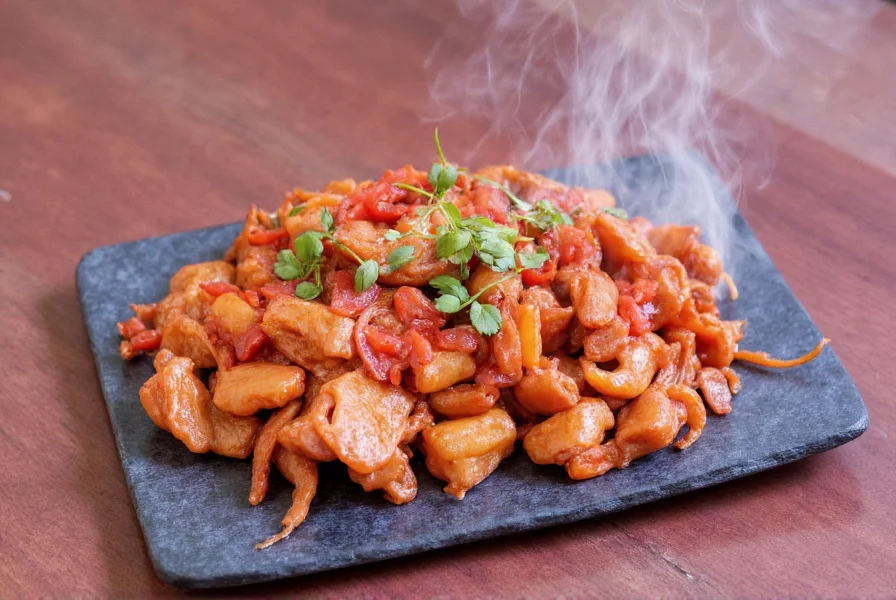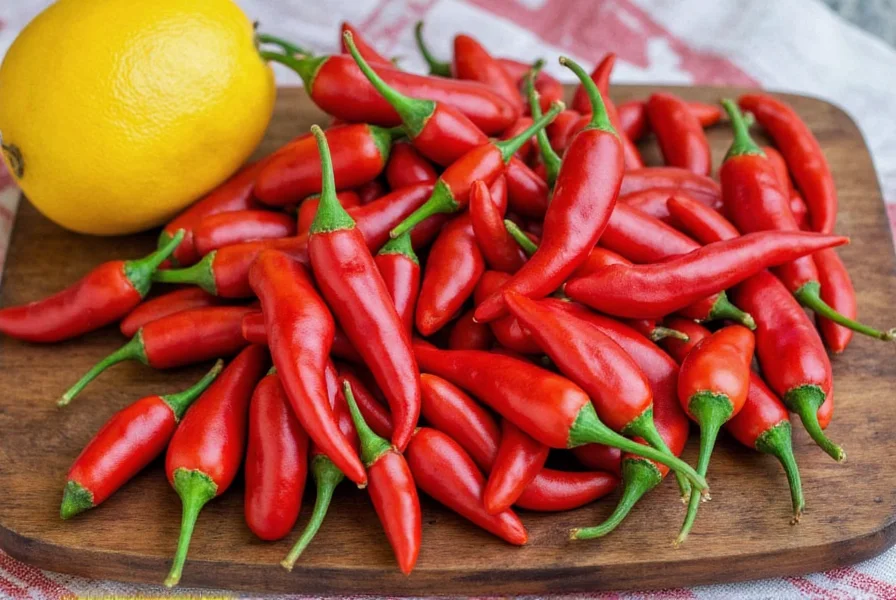Ever shaken a chili and heard a rattle? If so, you might have held a cascabel. This little-known gem of the spice world is more than just a curiosity — it's a flavor powerhouse waiting to elevate your culinary game. Whether you're a professional chef or a home cook with a taste for heat, this guide will help you unlock the secrets of the cascabel chili.
Table of Contents
- What Exactly Is Cascabel?
- What Does Cascabel Taste Like?
- How Hot Is It?
- Common Uses in Cooking
- Buying Guide: Choosing the Best Cascabel
- Cooking Tips and Tricks
- How Cascabel Stacks Up Against Other Chilies
- Frequently Asked Questions
- Final Thoughts
What Exactly Is Cascabel?
The cascabel chili (Capsicum annuum) is a small, round chili native to Mexico. Its name means 'rattle' in Spanish — a nod to the seeds inside that clack around when you shake the dried pepper. Unlike many other chilies, cascabel is often used whole or ground into powder, especially in traditional Mexican dishes.

Though not as famous as jalapeño or habanero, cascabel has been quietly spicing up regional recipes for centuries. It's commonly found in salsas, stews, and mole sauces. Because of its unique texture and flavor profile, it's gaining popularity beyond the borders of Mexico.
What Does Cascabel Taste Like?
If you're looking for a single word to describe cascabel, "nutty" might come to mind first. But there's more complexity to its flavor. Think of it as a blend of:
- Smoky earthiness
- Mild sweetness
- A hint of cocoa
- Underlying nuttiness
This depth makes it a favorite among chefs who want to add layers of flavor without overwhelming heat. Compared to the straightforward bite of cayenne or the floral kick of Thai chilies, cascabel brings warmth rather than fire.
How Hot Is Cascabel?
On the Scoville scale, which measures the heat level of chilies, cascabel clocks in between 1,000 to 3,000 SHU (Scoville Heat Units). For comparison, a jalapeño ranges from 2,500 to 8,000 SHU. So yes, cascabel is on the milder side of the chili spectrum — but don't be fooled. It still has enough punch to wake up your taste buds!
| Chili Type | Heat Level (SHU) |
|---|---|
| Cascabel | 1,000–3,000 |
| Jalapeño | 2,500–8,000 |
| Guajillo | 2,500–5,000 |
| Ancho | 1,000–2,000 |
Common Uses in Cooking
Cascabel's versatility makes it a star ingredient in both traditional and modern kitchens. Here are some popular ways to use it:
- Salsas: Especially red salsas, where it adds a rich, complex base.
- Mole sauces: Blended with spices and chocolate for a deep, smoky sauce.
- Stews and braises: Adds depth without overpowering other ingredients.
- Dry rubs: Ground cascabel gives meats and vegetables a warm, spicy crust.
- Marinades: Infused into oils or combined with citrus for zesty marinades.

Buying Guide: Choosing the Best Cascabel
Whether you're shopping at a local market or browsing online, here's how to pick the best cascabel chilies:
- Appearance: Look for firm, plump pods with a deep reddish-brown color. Avoid those that are shriveled or discolored.
- Rattle Test: Shake the chili. If you can hear the seeds rattling inside, that's a good sign of dryness and maturity.
- Smell: Fresh cascabel should have a rich, smoky aroma. If it smells musty or overly stale, skip it.
- Powder Quality: If buying ground cascabel, ensure it's vibrant in color and doesn't smell flat or dusty.
Here's a quick look at product types available:
| Type | Features | Best For |
|---|---|---|
| Whole Dried | Retains most flavor, rehydrates well | Sauces, salsas, soups |
| Ground Powder | Easy to use, consistent flavor | Rubs, marinades, baking |
| Oil-Infused | Convenient, aromatic | Drizzling over dishes, finishing touches |

Cooking Tips and Tricks
Ready to get cooking with cascabel? Here are some pro tips to make the most out of this flavorful chili:
- Toast First: Lightly toast the chilies in a dry pan before using. This enhances their nutty, smoky notes.
- Rehydrate Smartly: Soak dried chilies in hot water or broth for 20–30 minutes until soft.
- Blend Thoughtfully: When making sauces, blend cascabel with garlic, tomatoes, and a bit of vinegar for balance.
- Pair With: Chocolate, cumin, lime, avocado, and roasted vegetables bring out cascabel's best qualities.
- Store Properly: Keep dried chilies in an airtight container away from light and moisture.

How Cascabel Stacks Up Against Other Chilies
Wondering how cascabel compares to other popular chilies? Here's a handy comparison table:
| Chili | Flavor Profile | Heat Level | Best Use |
|---|---|---|---|
| Cascabel | Nutty, smoky, slightly sweet | 1,000–3,000 | Sauces, moles, salsas |
| Guajillo | Berry-like, tangy | 2,500–5,000 | Moist marinades, soups |
| Chipotle | Smoky, earthy | 2,500–8,000 | Meat dishes, dressings |
| Ancho | Fruity, raisin-like | 1,000–2,000 | Mole sauces, braised dishes |

Frequently Asked Questions
What is cascabel chili?
The cascabel chili (Capsicum annuum) is a small, round chili native to Mexico. Its name means 'rattle' in Spanish, referring to the sound its seeds make when shaken. It's known for its nutty, smoky flavor with mild heat (1,000-3,000 SHU) and is commonly used in Mexican cuisine for salsas, moles, and stews.
How hot is cascabel compared to other chilies?
Cascabel ranges from 1,000 to 3,000 Scoville Heat Units (SHU), making it milder than jalapeños (2,500-8,000 SHU) but slightly hotter than anchos (1,000-2,000 SHU). It's considered a medium-mild chili that provides flavor without overwhelming heat.
What does cascabel taste like?
Cascabel has a distinctive nutty flavor with smoky earthiness, mild sweetness, and a hint of cocoa. Unlike many chilies that are primarily hot, cascabel offers complex layers of flavor that add depth to dishes without intense heat.
What are good substitutes for cascabel chili?
If you can't find cascabel, good substitutes include:
- Ancho peppers (similar mild heat, though fruitier)
- Guajillo peppers (slightly hotter with berry-like notes)
- Mix of pasilla and a pinch of cumin (to mimic the nuttiness)
- Mulato peppers (for mole recipes)
For the nutty component specifically, adding a small amount of ground sesame seeds can help replicate cascabel's unique profile.
How do you prepare cascabel for cooking?
To prepare dried cascabel chilies:
- Remove stems and seeds (unless you want more heat)
- Lightly toast in a dry skillet for 20-30 seconds per side
- Soak in hot water or broth for 20-30 minutes until softened
- Blend or chop as needed for your recipe
For ground cascabel, you can use it directly in rubs, marinades, or dry spice blends.
Where can I buy cascabel chilies?
You can find cascabel chilies at:
- Mexican grocery stores (often in the dried chilies section)
- Specialty spice shops
- Online retailers (Amazon, specialty food websites)
- Larger supermarkets with extensive international sections
Look for them under "chile cascabel" or simply "cascabel." They're sometimes labeled by their regional names like "bolita" or "Corona."
How long do dried cascabel chilies last?
Properly stored dried cascabel chilies can last 1-2 years. To maximize shelf life:
- Store in an airtight container
- Keep in a cool, dark place away from moisture
- Check periodically for signs of mold or mustiness
Their flavor will gradually diminish over time, so for best results use within a year. Ground cascabel loses potency faster (6-8 months) due to increased surface area.
About This Guide
This guide is written by culinary experts with extensive experience in Mexican cuisine. All information is verified through authoritative culinary sources including the Scoville Scale database and traditional Mexican cooking references. For more details about our content standards, visit our About Us page.
Final Thoughts
The cascabel chili may not scream for attention like its hotter cousins, but it deserves a spotlight of its own. With its distinct flavor profile, moderate heat, and incredible versatility, it's a must-have in any serious spice lover's pantry.
So next time you see a chili that rattles when you shake it — don't pass it by. Embrace the sound, embrace the spice, and let cascabel take your dishes from ordinary to extraordinary.












 浙公网安备
33010002000092号
浙公网安备
33010002000092号 浙B2-20120091-4
浙B2-20120091-4